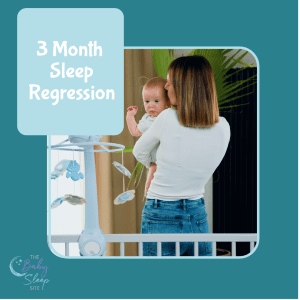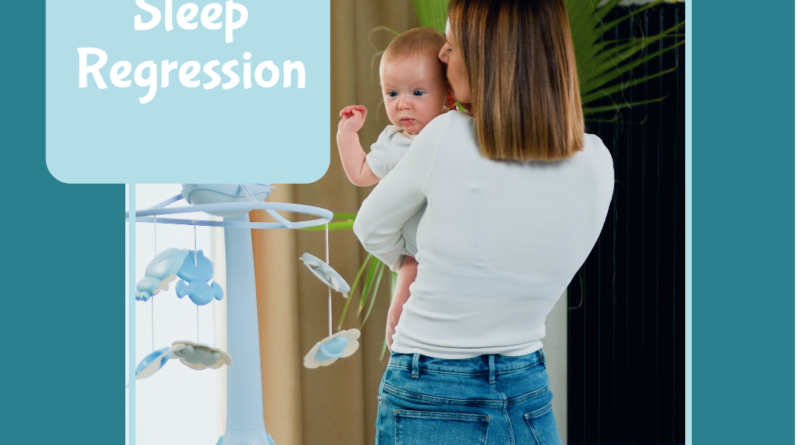3 Month Sleep Regression: Why It Happens + Tips from an Expert

The 3 month sleep regression is a time when babies wake up frequently at night and take short naps. Based on my 15+ years of experience as a sleep consultant, this is an exhausting stage in any parent’s sleep journey. But, I have some great tips for you that I’m happy to share!
In this article:
- What is a sleep regression?
- 3 Month Sleep Regression Signs
- When Does It End?
- Tips to Survive the 3 Month Sleep Regression
- More Resources for Your 3 Month Old
What is a Sleep Regression?
A sleep regression happens when a baby starts waking frequently at night, taking short naps, and/or skipping naps for no apparent reason. Most sleep regressions last 3 to 6 weeks, on average, and often coincide with a developmental milestones.
Check out all of the common sleep regressions so you’re prepared!
3 Month Sleep Regression Signs
While the 6-week sleep regression is the first most babies will go through, the 3 month sleep regression is often one of the most difficult. As with most sleep regressions, here are the most common signs:
- Increased fussiness and crying
- Frequent night-waking (every 1-2 hours!)
- Short naps
- Not able to be put down
When Does It End?
In reality, the 3 month sleep regression is really the 4 month sleep regression that your baby started early. During this regression, your baby’s brain is developing and starting to sleep more like an adult. This means your baby needs to go through more sleep cycles whereas as a newborn, they spent more time in deep sleep. It’s hard to rouse a newborn but a 3 month old will often wake up too much between sleep cycles. That’s what causes the frequent night-waking and short naps!
Since this is a permanent change to how your baby sleeps, this sleep regression will peak for 2-3 weeks but will not ever end. It is paramount that you teach healthy sleep habits they will use for the rest of their lives!
Tips to Survive the 3 Month Sleep Regression
Since your baby’s brain will never go back to that of a newborn, which is a good thing, this sleep regression is a permanent change. Therefore, it’s best to be proactive in helping your 3 month old baby sleep better. Here are tips to survive the 3-month sleep regression:
- Use an age-appropriate 3 month old schedule
- Start a bedtime routine for naps and nighttime sleep
- Offer an appropriate number of nighttime feedings
- Consider using a SNOO
- Use a better swaddle your baby can’t break out of such as the Love to Dream
- Use white noise or turn up the volume
- Try blackout curtains or blinds
- Consider trying a Dream Feed
As your baby’s sleep improves during the 3 month sleep regression, you’ll likely want to continue working on teaching healthy sleep habits. I’d love to provide you with those resources!
More Resources for Your 3 Month Old
Babies change so much in the first 3 years of life. We are happy to provide resources for your baby, toddler, or preschooler, as they grow and change. Here are just a few of our relevant free resources to consider bookmarking:
- Breastfeeding Frequency By Age
- Baby Feeding Chart – How Many Ounces by Age
- Newborn Schedules By Week
- Sleep Training Newborns – How and When?
- Baby Nap Chart – How Many By Age
- Personalized Sleep Plans for Babies
I hope this article has helped you feel more confident about caring for your baby, and if you need any help, you know where to turn!
The post 3 Month Sleep Regression: Why It Happens + Tips from an Expert appeared first on The Baby Sleep Site – Baby / Toddler Sleep Consultants.




